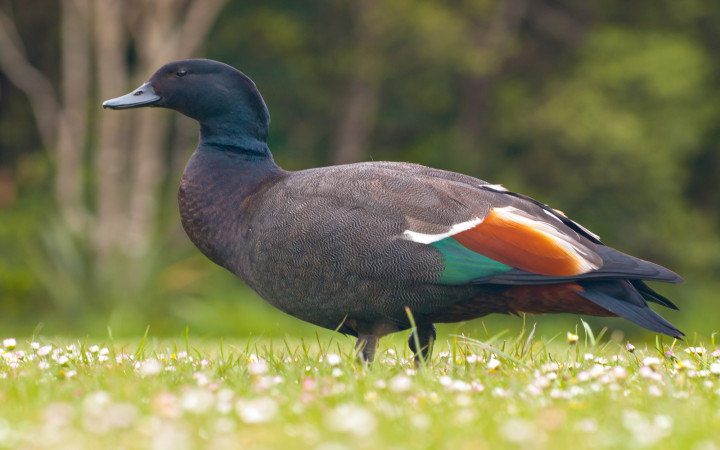Today’s Wonder of the Day was inspired by Georgie. Georgie Wonders, “where were paradise ducks first discovered” Thanks for WONDERing with us, Georgie!
Have you ever been to New Zealand? Maybe you’re one of the lucky people who live there year-round. If so, you know it’s a beautiful island full of a wide variety of wildlife. One such inhabitant is the topic of today’s Wonder of the Day—the paradise duck!
What is a paradise duck? It’s a very large type of duck that’s also called the paradise shelduck. It has lived in New Zealand for thousands of years. The Indigenous Maori people call the animal Putangitangi. They hunted the animal as food for many years before Europeans arrived on the island.
If you’ve been WONDERing with us for a while, you already know all about endangered species. Often, animals become endangered and extinct because of habitat loss. For paradise ducks, though, it’s a different story. Once hunted to near extinction, the population has rebounded since the 1990s. This is largely due to land being cleared for urban and agriculture development.
While many species on the island have suffered from habitat loss, this clearing of land has actually given the paradise duck more places to live. The ducks prefer open pastures and wide riverbeds. In urban environments, they can often be spotted in public parks.
What do paradise ducks eat? They’re mainly herbivores and prefer grass, clover, peas, and grain. They will also eat underwater vegetation from the beds of streams and rivers. They’re also known to snack on small invertebrates, like worms and bugs.
Have you ever seen a paradise duck? If so, you probably noticed that they’re very large. In fact, some people might mistake them for geese. Males grow to weigh about 3.7 pounds (1.7 kg). Females are about three pounds (1.4 kg). They range from 24.8 to 27.5 inches (63 to 70 cm). They also have long necks, making them look even more like geese.
Paradise ducks are also known for their brightly colored feathers. Females normally have white heads and chestnut bodies with black, white, and green feathers on their wings and tails. The males have black heads and chestnut bodies. They may also have black, white, and green feathers, but are typically less colorful than the females.
Today, people still hunt the paradise duck for food and game. Some farmers also see the animals as pests. While the population was once threatened, more than 700,000 paradise ducks may live in New Zealand today. The animals often live together in pairs or small groups. Both parents help raise their young.
The paradise duck is just one of many interesting and colorful animals that live in New Zealand. What other types of wildlife are you interested in learning more about?
Standards: NGSS.LS1.A, NGSS.LS1.C, NGSS.LS2.C, CCRA.L.3, CCRA.L.6, CCRA.R.1, CCRA.R.2, CCRA.R.4, CCRA.R.10, CCRA.SL.1, CCRA.SL.2, CCRA.W.2, CCRA.W.4, CCRA.W.9, CCRA.L.1, CCRA.L.2




